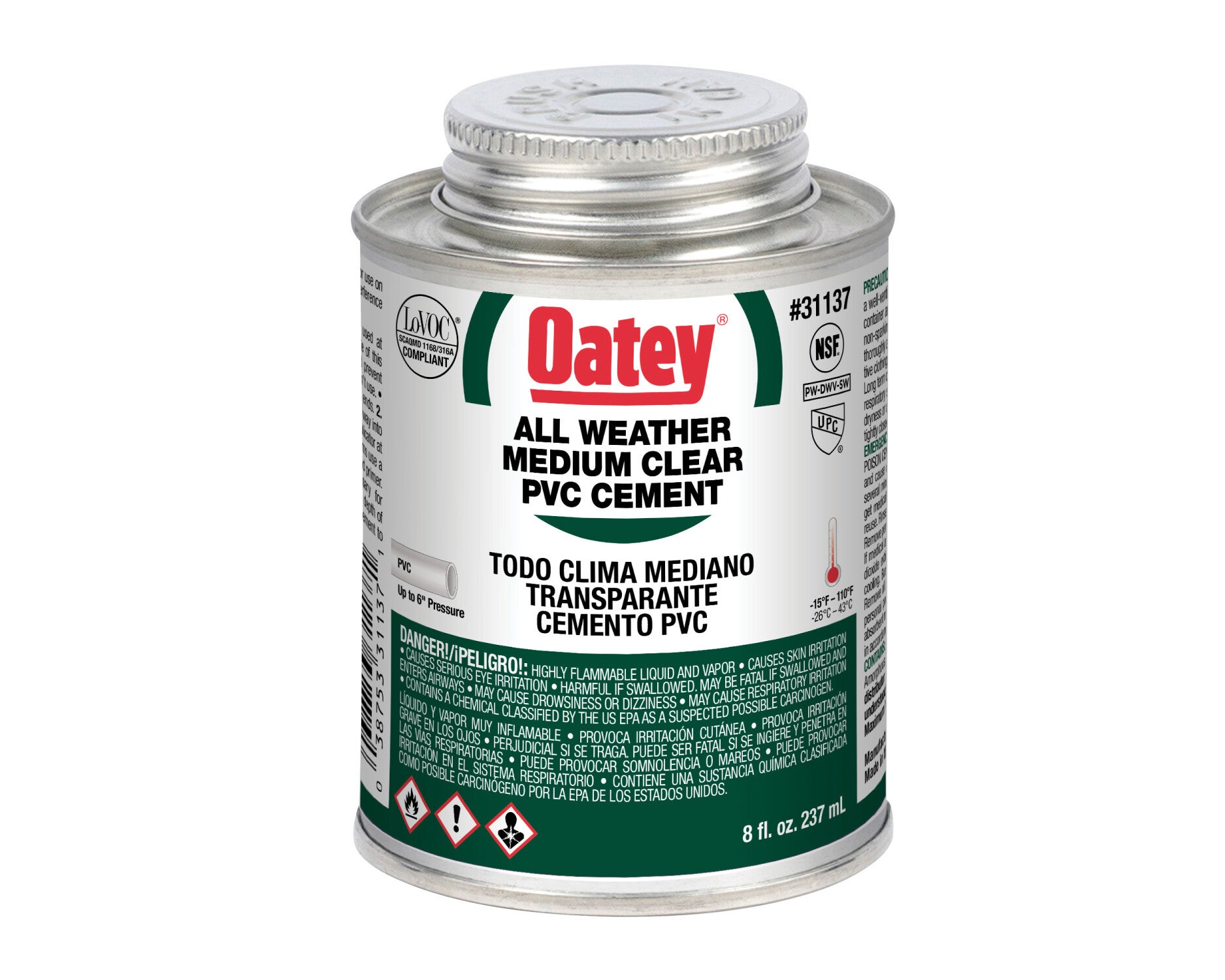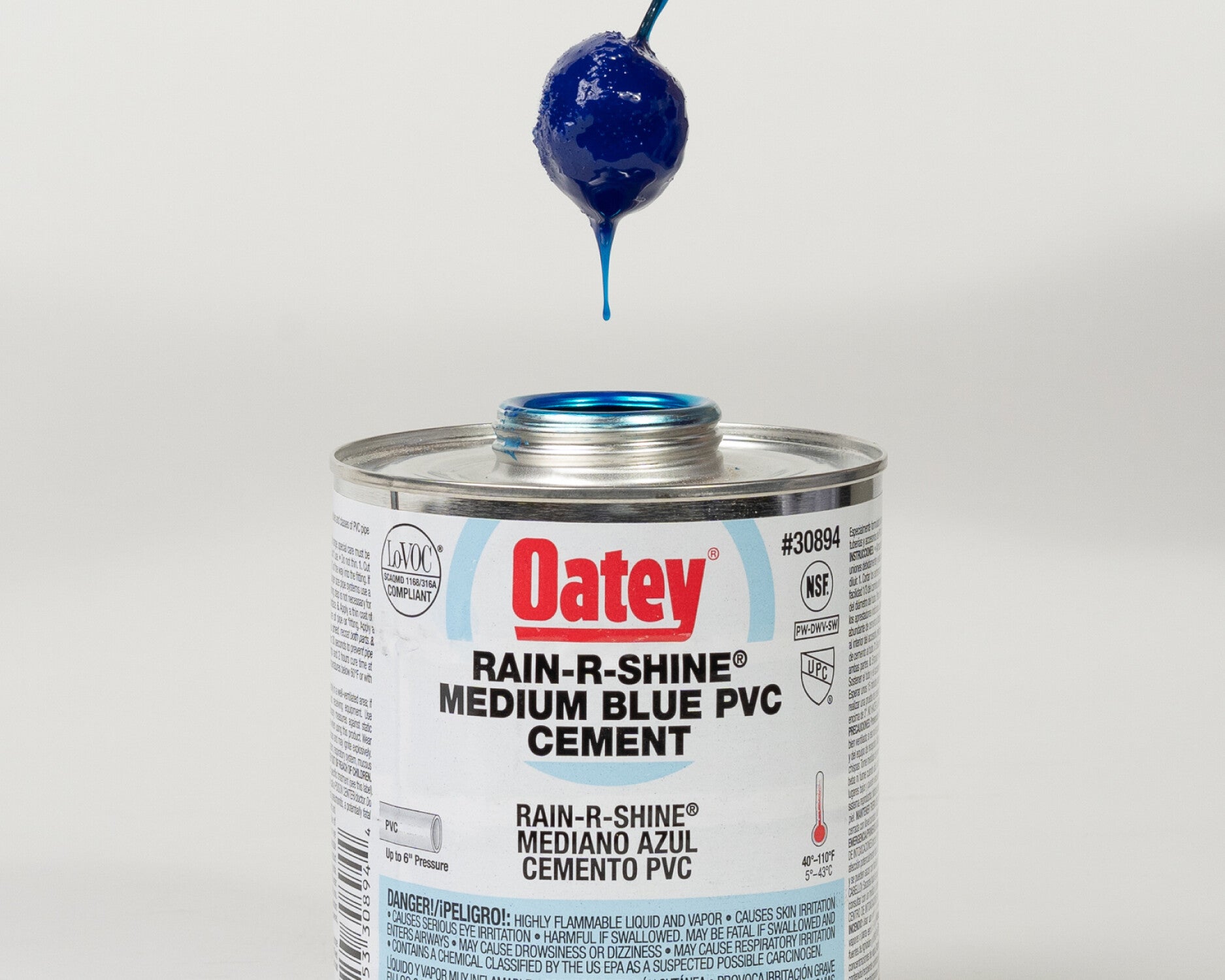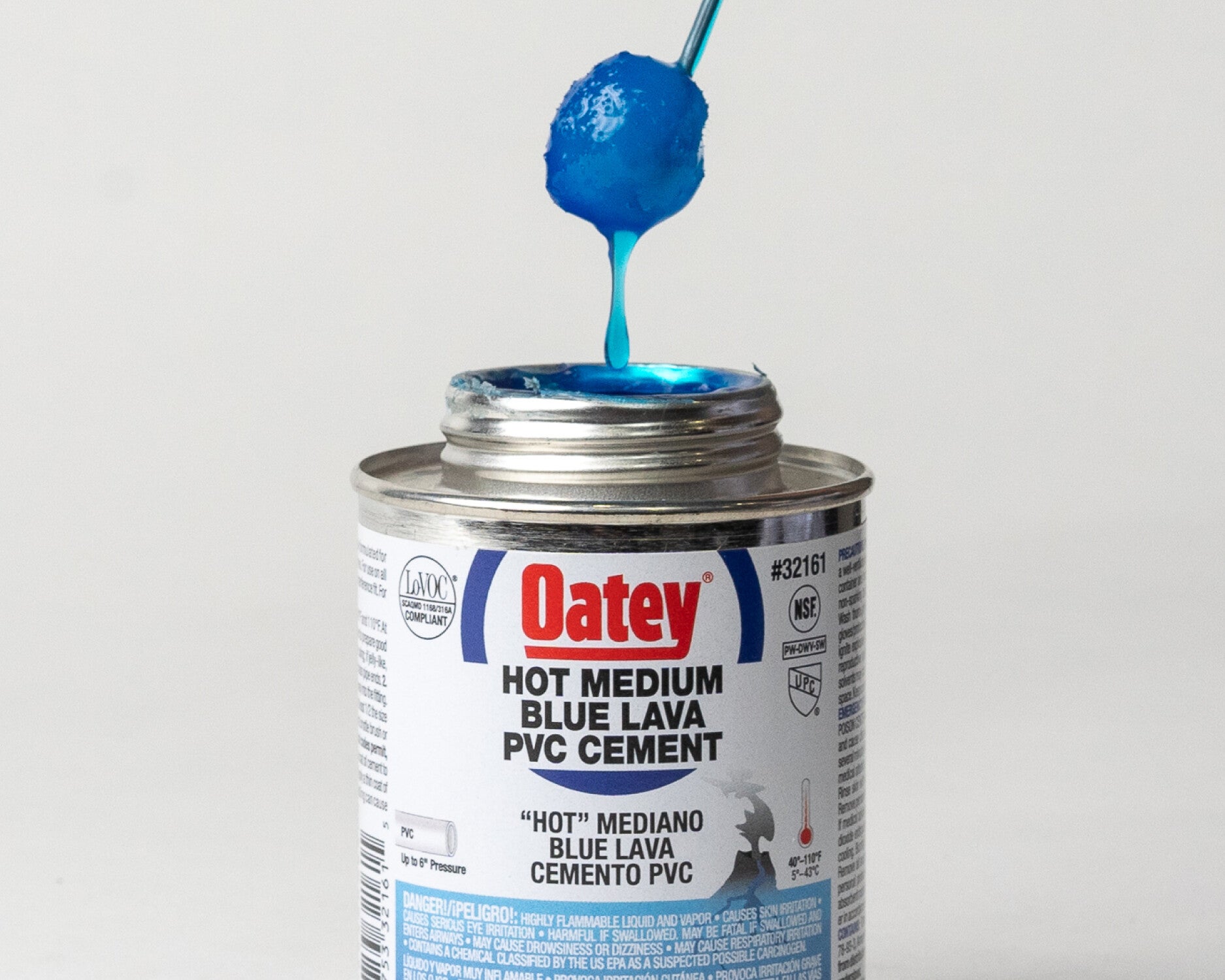Whether fixing a leaky PVC pipe at home or repairing and installing a complete system on site, understanding the drying and curing process of PVC solvent cement is critical to getting the job done right the first time.
PVC glue doesn’t just need to dry; it needs time to cure. The latter is the stage in which it forms a solid, watertight bond. Rushing this process by applying pressure or turning on the system too soon can lead to leaks, joint failure, and expensive call-backs or repairs.
This guide breaks down what you need to know about dry time and cure time and the working conditions that affect both. With the right timing and techniques, you’ll save time, avoid headaches, and ensure your PVC plumbing work meets the real-world demands of daily use.
What is PVC Glue? (And Why It’s Not Really “Glue”)
Despite the common term “PVC glue,” the product used to join PVC pipes is technically PVC solvent cement. Unlike traditional glue, which acts as a simple adhesive, solvent cement chemically softens the surfaces of the pipe and fitting. Once joined, these surfaces fuse, forming a single, continuous material structure.
This process, known as solvent welding, creates a bond that is often stronger than the pipe itself. For this reason, solvent cement is used in plumbing systems that must withstand internal pressure and environmental stress.
Set Time vs. Cure Time: What’s the Difference?
- Set time (or “dry time”) is the time needed for the joint to become tack-free and hold its shape without movement.
- Cure time is the full period required for the chemical bond to reach its maximum strength and handle system pressure.
While the joint might feel dry within minutes, testing or pressurizing is not necessarily safe. Premature testing can weaken the bond or cause total failure, especially in pressurized water systems.
Curing Time For PVC Pipes: General Guidelines
Cure time is not one-size-fits-all. How long to wait after cementing PVC depends on multiple factors, including pipe size, ambient temperature, humidity, and the type of cement used.
Below is a general reference chart based on optimal conditions:
Average Joint Cure Times for PVC, ABS and CPVC Solvent Cements
| PVC & ABS | |||||
|---|---|---|---|---|---|
| Pipe Diameter | Temperature during assembly and cure period | ||||
| 60° to 100°F | 40° to 60°F | 20° to 40°F | 0° to 20°F | ||
| ½" to 1¼" | Up to 180 psi | 15 min | 20 min | 30 min | Please contact Oatey Technical Services for cure time info |
| 180 psi + | 4 hours | 8 hours | 36 hours | ||
| 1½" to 3" | Up to 180 psi | 30 min | 45 min | 60 min | |
| 180 psi + | 8 hours | 16 hours | 3 days | ||
| 4" to 5" | Up to 180 psi | 2 hours | 4 hours | 36 hours | |
| 180 psi + | 12 hours | 24 hours | 4 days | ||
| 6" to 8" | Up to 180 psi | 8 hours | 16 hours | 3 days | |
| 180 psi + | 24 hours | 48 hours | 9 days | ||
If you are looking for a more comprehensive chart on the handling and curing times of solvent welds for PVC, ABS and CPVC, view Oatey’s cure times sheet here.
Note: For temperatures below 40°F (4°C) or pipes larger than six inches, consult the specific Oatey product data sheets.
Factors That Influence How Long to Wait After Gluing PVC
Understanding the environmental and technical variables that affect PVC solvent cement drying time is essential. Below are the most influential factors:
1. Type of Cement
Choosing the correct cement type is the first step toward ensuring proper dry and cure times. Oatey offers a wide range of premium-grade cements tailored to different working conditions. Selecting the right product can significantly improve cure efficiency and reduce wait time:

- Oatey® All-Purpose Cement: Great for PVC, CPVC, and ABS applications with pipe and fittings up to 6 inches in diameter with interference fit.

- Oatey® All Weather PVC Cement: Recommended for potable water and drain, waste and vent (DWV) applications, this cement is formulated to perform in extreme hot or cold conditions, from -15°F to 110°F.

- Oatey® Rain-R-Shine® Medium Blue PVC Cement: Specially formulated for wet conditions and quick pressurization, this cement is recommended for pool and spa, irrigation, potable water, pressure pipe and DWV applications.

- Oatey® Hot Medium Blue Lava PVC Cement: A fast-set cement ideal for quick-turnaround jobs, this product is recommended for DWV repair, irrigation, and pool and spa applications.

2. Pipe Size
Larger pipes have more surface area and greater material mass, which means they absorb solvent cement differently. As a result, larger-diameter pipes require longer cure times.
3. Ambient Temperature
Temperature has a major impact on solvent evaporation and chemical fusion. Higher temperatures accelerate curing, while colder environments slow the process considerably. Below 40°F, cure time can double or even triple, and special products like Oatey’s All-Weather Cement are recommended.
4. Humidity
While humidity does not stop solvent cement from curing, high moisture levels can slow evaporation, particularly in enclosed or poorly ventilated areas. Using fans or ensuring airflow can support more consistent drying.
5. Application Technique
Proper primer use, generous cement application, and ensuring full joint engagement all contribute to a secure and timely cure. Skipping steps, such as priming or rotating the pipe when joining, can delay curing and weaken the bond.
How to Use PVC Glue (Solvent Cement)
To ensure strong, lasting joints every time, follow these tips:
- Always use primer: Primer prepares the surface for solvent welding by softening the material and removing contaminants.
- Check compatibility: Use cement rated for the specific material: PVC, CPVC, or ABS.
- Work quickly: Solvent cement sets fast. Align and insert the pipe once cement is applied.
- Hold the joint: Maintain pressure for 30–60 seconds to prevent rollback.
- Wipe excess cement: Clean the joint to avoid drips or weak spots.
- Allow proper cure time: Follow time recommendations exactly. Don’t cut corners.
For additional tips and tutorials, check out our blog: How to Achieve the Perfect Solvent Weld Every Time.
When using PVC solvent cement, patience is key. Taking shortcuts with dry or cure times may result in leaks, weak bonds, or system failure. By understanding the variables involved—such as temperature, humidity, pipe size, and product type—you can ensure every joint is strong, secure, and built to last.
Frequently Asked Questions
-
How long do I wait after gluing PVC before turning water on?
-
At least two hours for small pipe sizes in warm weather. Up to 24 hours for larger pipes or low temperatures.
-
-
Can you speed up the curing process with a heat gun or fan?
-
No. Heat may create uneven curing or damage the pipe. Always allow natural curing per instructions.
-
-
What happens if I take a pressure test too soon?
-
Premature testing can rupture the joint, leading to leaks or full system failure.
-
-
Is PVC glue waterproof once dry?
-
Yes. Once fully cured, the solvent weld forms a watertight and permanent bond.
-
-
How do I choose the right Oatey cement?
-
Consider the pipe material, size, environmental conditions, and cure time needs.
-